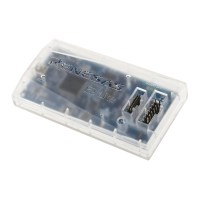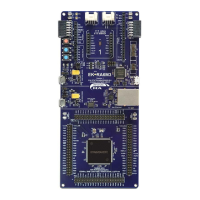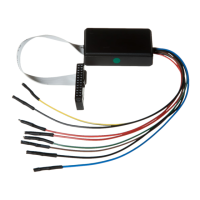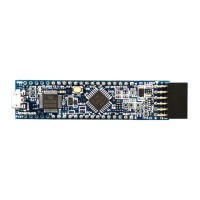E1/E20/E2/E2 Lite Additional Document 3. Notes on Usage
R20UT2937EJ0301 Rev.3.01 Page 41 of 45
Jul 1, 2020
3.9 Debug Functions
3.9.1 Step Execution
(1) Cautions on using step-in (step execution)
The value of some SFRs (special function registers) might remain unchanged while stepping into
code. If the values of the SFRs do not change while stepping into code, operate the microcontroller
by continuously executing the instructions instead of executing them in steps.
Stepping into code: Instructions in the user-created program are executed one by one.
Continuous execution: The user-created program is executed from the current PC value.
3.9.2 [Go to Here]
If [Go to Here] is selected, event breakpoints that have been set so far will be temporarily invalidated.
3.9.3 Debugging in Standby Mode
The break is an interrupt function of the CPU. Standby mode is released by the break generated by
using the following debugging functions.
<1> Forced break
<2> Step execution of the standby instruction (Stops the user program after execution instruction)
<3> Short break generated by the pseudo-RRM function (Break When Readout)
<4> Short break generated by the pseudo-DMM function (Break When Write)
<5> Short break generated by setting a breakpoint while executing the user program
3.9.4 Pseudo-Real-Time RAM Monitor Function or Pseudo-Dynamic Memory Modification Function
Note the following points when using the pseudo-real-time RAM monitor (RRM) function or the pseudo-
Dynamic Memory Modification (DMM) function.
• Standby mode (HALT or STOP) may be cancelled during monitoring.
• The pseudo-RRM function or the pseudo-DMM function does not operate while the CPU operating
clock is stopped.
• When the number of monitoring points is numerous, the response of the debugger becomes slow.
• Influence of the debugger response becomes small by using a watch panel instead of a memory
panel.
• Four bytes of the RAM area are used when the pseudo-RRM and pseudo-DMM functions are used.
The RAM area to be used when using the pseudo-RRM and pseudo-DMM functions should be set by
the build tool.
(For details on setting the area, refer to the user's manual for the build tool.)
If no area is set, the four bytes at the beginning of the RAM area will be used.
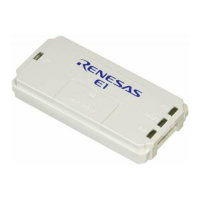
